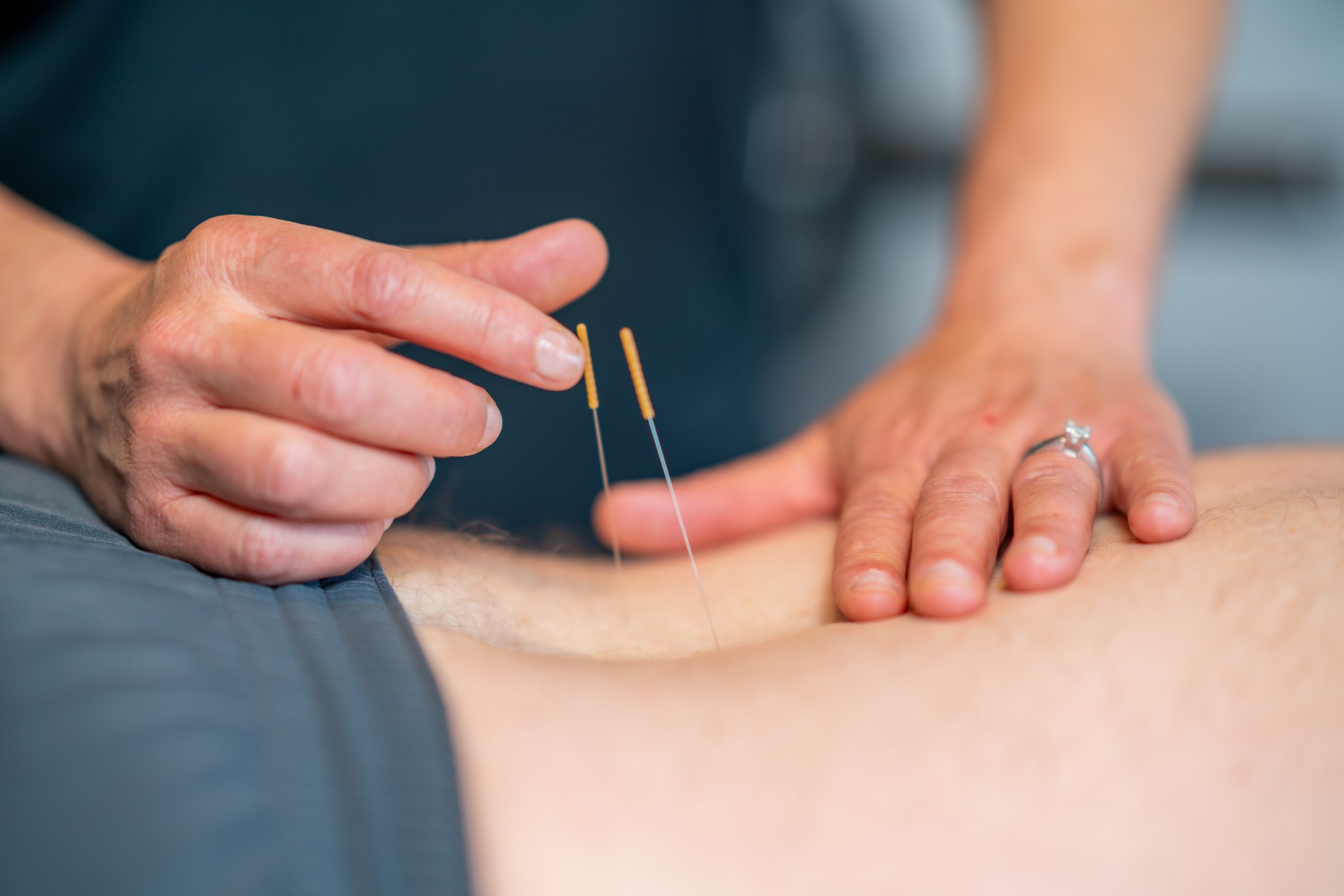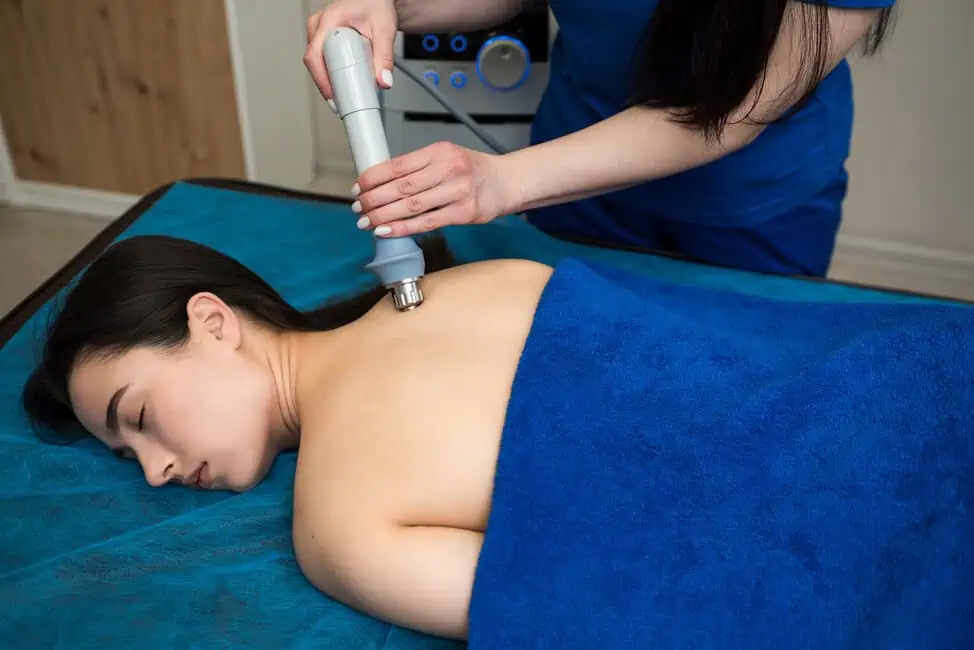Sports injuries are unfortunate but usual among athletes of all levels, from weekend warriors to expert players. These injuries range from minor strains and sprains to extreme issues like muscle tears and joint damage. Regardless of severity, recovering from a sports injury can be challenging. One valuable tool in the rehabilitation arsenal is dry needling.
Dry needling, often abbreviated as DN, is a therapeutic approach that involves the insertion of thin needles into specific trigger points within muscles or connective tissues; unlike acupuncture, dry needling targets these trigger points, which are often tight or knotted, to release tension and improve muscle function.In this article, we will explore the role of dry needling after a sports injury, examining its benefits, safety, and how it complements traditional rehabilitation methods.
The Science Behind Dry Needling
Dry needling is rooted in understanding trigger points, which are tight knots of muscle fibers that can develop due to overuse, trauma, or other factors. These trigger approaches can cause localized pain and contribute to muscle dysfunction and reduced range of motion. Dry needling aims to release these trigger points and alleviate associated symptoms.
When a skilled practitioner inserts a thin, sterile needle into a trigger point, it can create a local twitch response. This twitch signifies that the muscle fibers are contracting and then relaxing.
This contraction-relaxation cycle helps break the muscle tension cycle, allowing the muscle to return to its normal resting state. Additionally, the needling process can increase blood flow to the portion, promoting healing and reducing inflammation.
Pain Management and Reduction
One of the primary reasons athletes turn to dry needling after a sports injury is pain management. Sports injuries often come with varying degrees of pain and discomfort, which can be debilitating and hinder recovery.
Dry needling can provide relief by targeting trigger points that contribute to pain. By releasing tension in these areas, athletes experience reduced pain and discomfort, which can improve their overall quality of life during the recovery period.
Furthermore, dry needling can be particularly effective in addressing chronic pain from sports injuries. When injuries are not adequately rehabilitated, individuals can develop persistent pain issues. Dry needling can help address these chronic pain problems by targeting the root cause – the trigger points – and providing relief.
Improved Range of Motion and Function
Recovering from a sports injury often involves regaining lost range of motion and function in the affected area. Scar tissue and muscle imbalances can limit athletes’ ability to move and perform at their best. Dry needling can play a crucial role in this aspect of rehabilitation.
By targeting trigger points and releasing tension in specific muscles, dry needling can help restore proper muscle function. This, in turn, allows athletes to regain their range of motion, which is essential for returning to their sport or daily activities.
Whether it’s a shoulder injury affecting a swimmer’s stroke or a hamstring strain impacting a runner’s gait, dry needling can aid in the restoration of functional movement patterns.
Complementing Traditional Rehabilitation
Dry needling is not a standalone treatment for sports injuries but a valuable complement to traditional rehabilitation methods. It is often used in conjunction with physical therapy, exercise, and other therapeutic interventions.
Physical therapists and sports medicine professionals often manage (use) dry needling in their treatment plans to enhance their effectiveness. For example, after an ankle sprain, a therapist may use dry needling to alleviate muscle tension in the calf muscles, which can help improve the patient’s gait and overall rehabilitation progress.
By addressing muscle imbalances and trigger points, dry needling can accelerate the healing process and improve the outcomes of traditional rehabilitation programs.
Minimizing the Need for Medications
In many cases, athletes recovering from sports injuries rely on pain-relieving medications to manage their discomfort. While these medications can be effective, they often come with potential side effects and the risk of dependency. Dry needling offers a drug-free alternative to pain management.
By addressing the root cause of pain through trigger point release, athletes may reduce their reliance on pain medications. This can be particularly important for those who want to avoid potential adverse effects or long-term use of pain relief drugs.
Dry needling provides a non-pharmacological approach to pain management, making it an attractive option for athletes seeking natural and sustainable relief.
Safety and Considerations
Dry needling is ideal and safe when performed by a trained and licensed practitioner. However, as with any medical procedure, there are considerations and potential risks. It’s essential to choose a qualified healthcare provider who has proper training and follows strict hygiene practices.
Potential risks associated with dry needling include bruising, soreness, and, rarely, infection. Patients should communicate any concerns or adverse reactions to their practitioner promptly.
It may also not be suitable for individuals with certain medical conditions or contraindications, so a thorough assessment by a qualified provider is crucial before treatment.
Our Offer at Source of Health
Unlock the therapeutic potential of Dry Needling atSource of Healthin Scottsdale, Arizona. This cutting-edge treatment utilizes ultra-thin, sterile needles to target trigger points within your muscles, offering relief from pain, reducing muscle tension, and enhancing your range of motion.
Whether you’re grappling with chronic pain, recovering from a sports injury, or battling muscle stiffness, our Dry Needling therapies can be the key to effective relief, paving the way for your return to an active lifestyle.
As we mentioned, Dry Needling is a non-invasive procedure with minimal downtime. While you may experience mild soreness or bruising at the treatment site, these side effects typically fade within a few days.
Many patients report a significant reduction in pain and an improvement in mobility after just one session. However, the number of treatments required will be tailored to your specific condition and wellness objectives.
Our Key Takeaway
The journey to recovery can be long and challenging. Athletes of all levels strive to return to their activities as quickly and safely as possible. Dry needling has become a valuable tool in achieving these goals with its ability to address pain, improve range of motion and function, complement traditional rehabilitation, and minimize the need for medications.
If you’re recovering from a sports injury and looking for practical, drug-free pain management and enhanced rehabilitation, consider incorporating dry needling into your treatment plan.
Remember to consult a qualified healthcare provider who can assess your specific needs and guide you on whether dry needling is a suitable option.
Please book an appointmentwith us here at Source of Health to explore how dry needling can help you on your path to recovery and improved athletic performance. Your journey to a healthier, pain-free future starts here.






